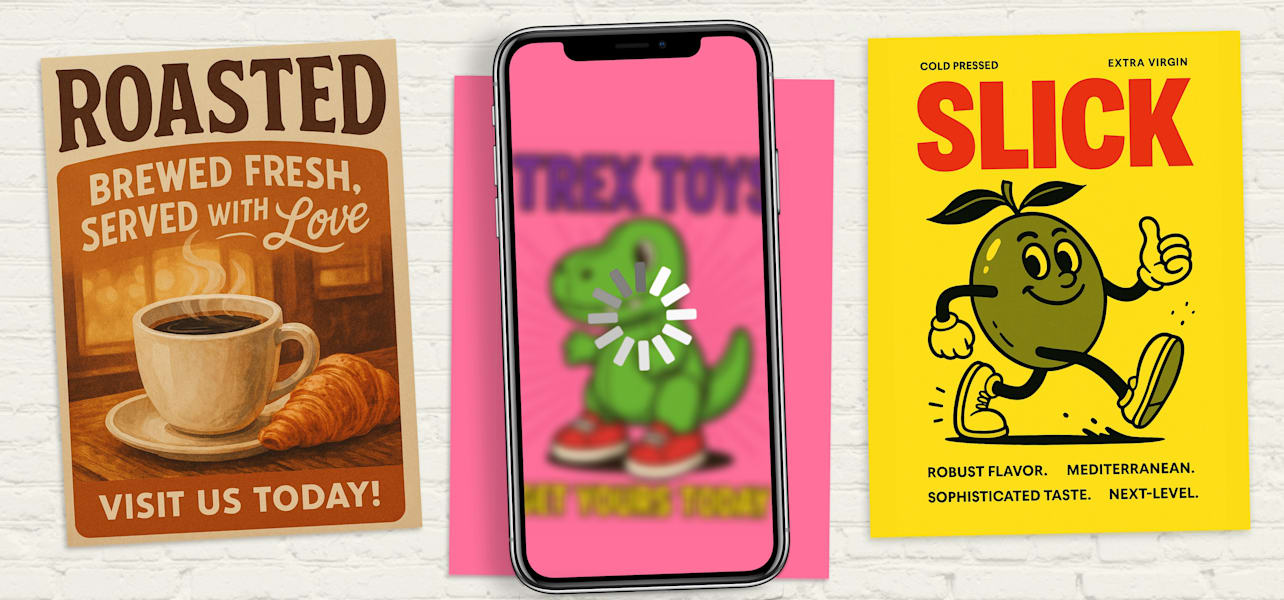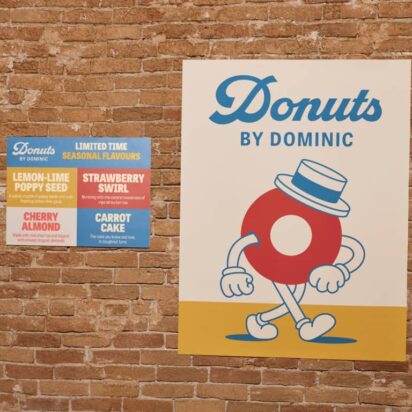Artificial intelligence has transformed the way we approach design. What once took hours of sketching, software skills and back-and-forth edits can now begin with a single sentence. AI tools are an asset in the design process, giving you a way to describe your idea, watch it take shape in seconds and refine it until you have something worth sharing.
And if you want your AI poster design to go beyond the screen and become a professional-quality poster, there are a few important steps and considerations. File formats, resolution, print sizes and even copyright all matter when you’re working with AI designs.
Learn how to create AI posters in this article, from how to write your prompt to solutions for common AI challenges.
- AI posters are created with an AI platform and prompting. They’re fast, flexible and accessible for anyone.
- Several AI tools can create unique designs, from simple to advanced—different tools have different strengths.
- Strong prompting, refining generations and prepping files are key to professional quality AI posters.
- Keep formats, sizes and resolution in mind for printing.
- AI may be trained on artists’ media—be mindful of copyright and ethical considerations.
What are AI-generated posters?
AI posters are designs created by artificial intelligence tools. Instead of drawing, photographing or manually designing every element, you type in a description (called a “prompt”). The AI then generates images that match what you’ve asked for.
Traditional posters are created through human-only design: a designer sketches ideas, edits them in software like Photoshop or Illustrator and builds the final product. AI poster design flips this process. You start with either words or existing visuals to prompt the AI, get instant iterations of the artwork from the model and then you set about refining your favorite results—either in AI with further prompting or manually with other design tools.
Why are AI posters trending right now? Three big reasons:
- Speed: You can create a first draft in seconds, instead of hours.
- Accessibility: Even if you’ve never used design software, you can still generate professional-looking posters.
- Creativity: AI tools push design into playful, experimental territory, letting you try unusual styles and ideas that you might never have attempted otherwise.
For small business owners, students and entrepreneurs, this makes posters less intimidating and more fun.

AI for poster design
There are many AI platforms that can create posters, each with its own strengths. Choosing the right one depends on your design goals, budget and comfort with editing software.
DALL·E 3 (OpenAI)
DALL·E is known for realistic images and creative adaptability. It’s great for event posters, advertising visuals and any design where you need unique artwork.
- Pros: Strong detail and realism
- Cons: Sometimes unpredictable with layouts
- Best for: Unique event and advertising visuals that need a realistic finish
MidJourney
MidJourney is famous for artistic, stylized outputs. If you want dramatic movie-poster effects, fantasy-inspired art or bold imagery for a campaign, MidJourney excels.
- Pros: Visually striking results
- Cons: Less control over text or specific layouts
- Best for: Artistic, stylized designs like dramatic posters or campaigns
Gemini (Google)
Gemini combines AI image generation with Google’s ecosystem, offering versatility for posters, marketing visuals and design assets. It emphasizes integration with text and layout tasks, making it useful for polished, mixed-media designs.
- Pros: Strong integration with text and design workflows
- Cons: Visual style can feel less distinctive than art-focused models
- Best for: Balanced poster designs where copy and visuals need to work seamlessly
CoPilot (Microsoft)
CoPilot leverages AI to support design in Microsoft tools like PowerPoint and Designer. While not as purely art-focused, it’s great for quick poster layouts, branded graphics and adapting artwork to fit specific formats.
- Pros: Seamless Microsoft integration, fast layouts
- Cons: Less creative depth for highly stylized artwork
- Best for: Practical, branded poster graphics that need to be created quickly and on-brand
Stable Diffusion (DreamStudio)
This open-source option offers flexibility and customization. You can adjust parameters, fine-tune styles and even train your own model if you want very specific outputs.
- Pros: Maximum control
- Cons: Requires more technical knowledge
- Best for: Designers who want full control and technical customization
Adobe Firefly
Integrated into Photoshop and Illustrator, Firefly is built for professionals. It allows you to combine AI generation with industry-standard editing tools. Great for refining AI outputs into polished final posters.
- Pros: Seamless editing
- Cons: Requires Adobe subscription and design skills
- Best for: Professionals who already use Adobe tools and need refined outputs
Fotor AI Poster Generator
Designed specifically for posters, Fotor offers ready-made layouts powered by AI. It’s useful if you want fast results with a minimal learning curve.
- Pros: Poster-specific templates
- Cons: Fewer customization options
- Best for: Entrepreneurs or small businesses who want quick no-fuss posters
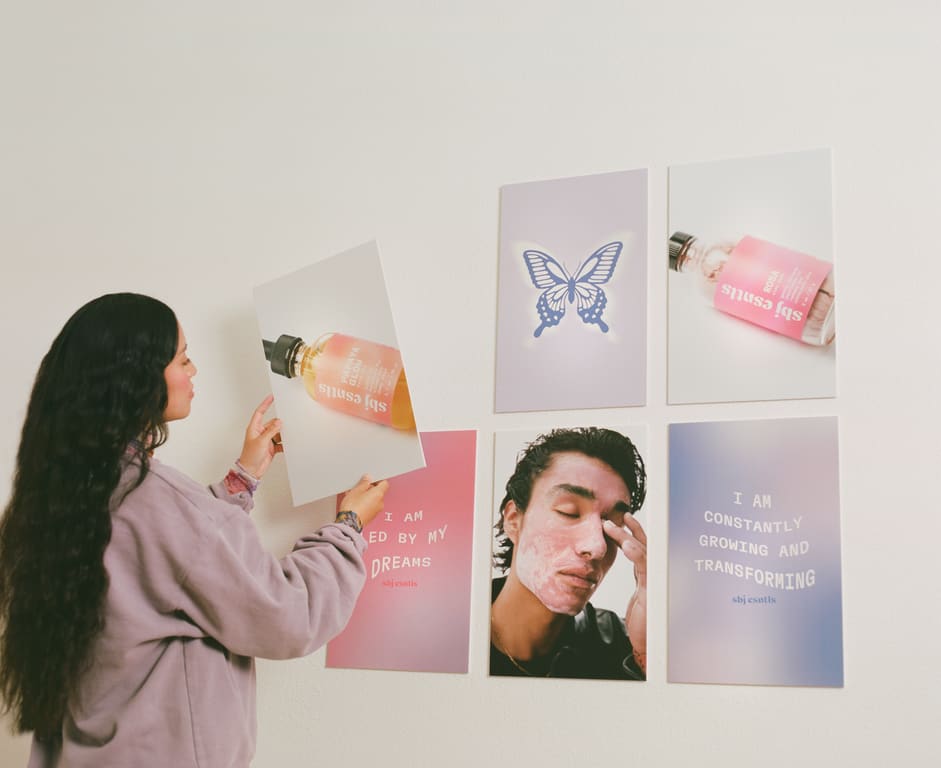
How to create your poster design with the help of AI
Making a successful AI poster is a mix of creativity, experimentation and technical prep. Here’s a step-by-step approach.
Step 1: Write strong prompts
AI responds to detail. The more specific you are, the more accurate the result. Use descriptive words about mood, color, style and layout.
For example, instead of “concert poster,” try: “bold 80s-style neon concert poster with black background, futuristic fonts, and a glowing guitar.” Another example: instead of just saying “travel poster,”
try: “retro-futuristic travel poster for Mars, minimalist Bauhaus typography, warm sunset tones.”
Prompts don’t have to be text-only. Some tools let you upload existing images or use reference styles for inspiration as well.
Many tools allow “negative prompts.” You can tell the AI what not to include, like “no blurry text” or “no extra hands.” This helps you avoid common issues like blurry text or extra objects.
Step 2: Refine your results
AI rarely gets it right on the first try. Generate several variations, compare them and select the strongest. You can then upscale the image or sharpen details. Some tools let you zoom out or extend the canvas if you want more background to work with.
Common ways AI messes up
Here’s what to watch out for as you refine your results, and quick fixes for each:
- Distorted text: Add text later in VistaPrint Studio or Illustrator.
- Pixelation when enlarging: Use AI upscalers or regenerate at higher resolution.
- Odd proportions or artifacts: Crop, retouch, or re-prompt.
- Inconsistent hands, faces, or objects: These are common AI issues. Fix with editing tools or by rerunning prompts.
- Layout problems: AI may not center or align elements correctly. Adjust manually in design software.
- File confusion: Save files clearly labelled as “print-ready” with the right DPI to avoid mistakes later.
Vista helps bridge these gaps by ensuring your file is technically correct for printing and looks professional on paper.
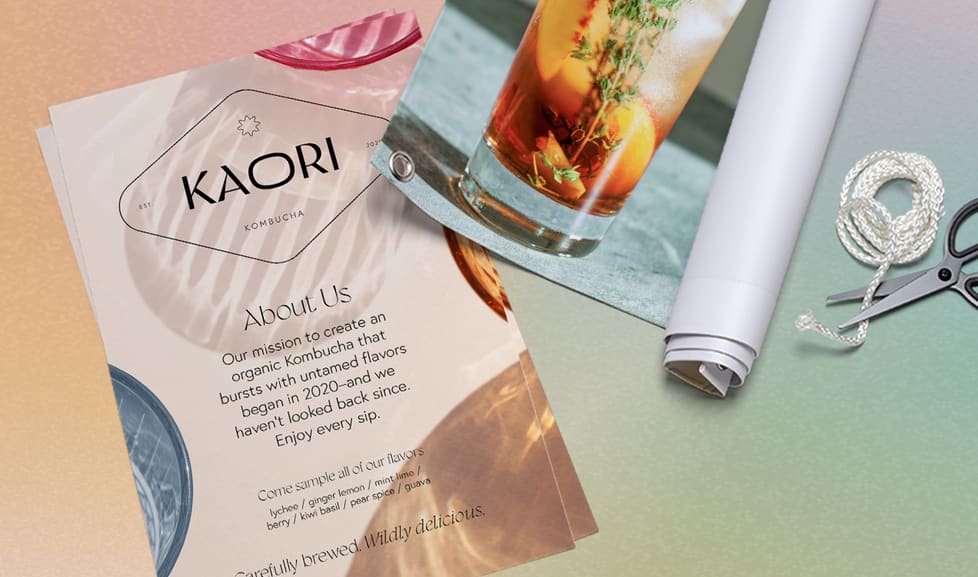
Step 3: Add text separately
Most AI tools still struggle with readable text. If your poster needs a headline, event date or contact info, add it later in design software such as VistaPrint Studio, Illustrator or other editing tools. This ensures clarity and control over fonts.
For best results, choose bold, legible fonts and align text with clear spacing so your message is easy to read at a glance.
Step 4: Prep files for print
Once you’ve chosen your design, make sure it’s print-ready:
- Export to high-resolution JPG, PNG or PDF.
- Ensure 300 DPI minimum, especially for large posters.
- Check color mode: Convert files from RGB (digital) to CMYK (print) for accuracy.
- Save clearly labelled files: Mark them as “print-ready” with the correct DPI to avoid mistakes later.
When your file is ready, upload it directly to VistaPrint’s poster printing services. You can:
- Choose from a wide range of sizes to suit your project.
- Select finishes like glossy, matte or recycled paper to get the look and feel you want.
- Preview your design to make sure everything is aligned before it goes to print.
This way, your AI-generated concept gets the professional polish it needs while ensuring everything is technically correct, visually striking and ready to share in the real world.
Want more layout tips? See our full guide on how to make a poster.
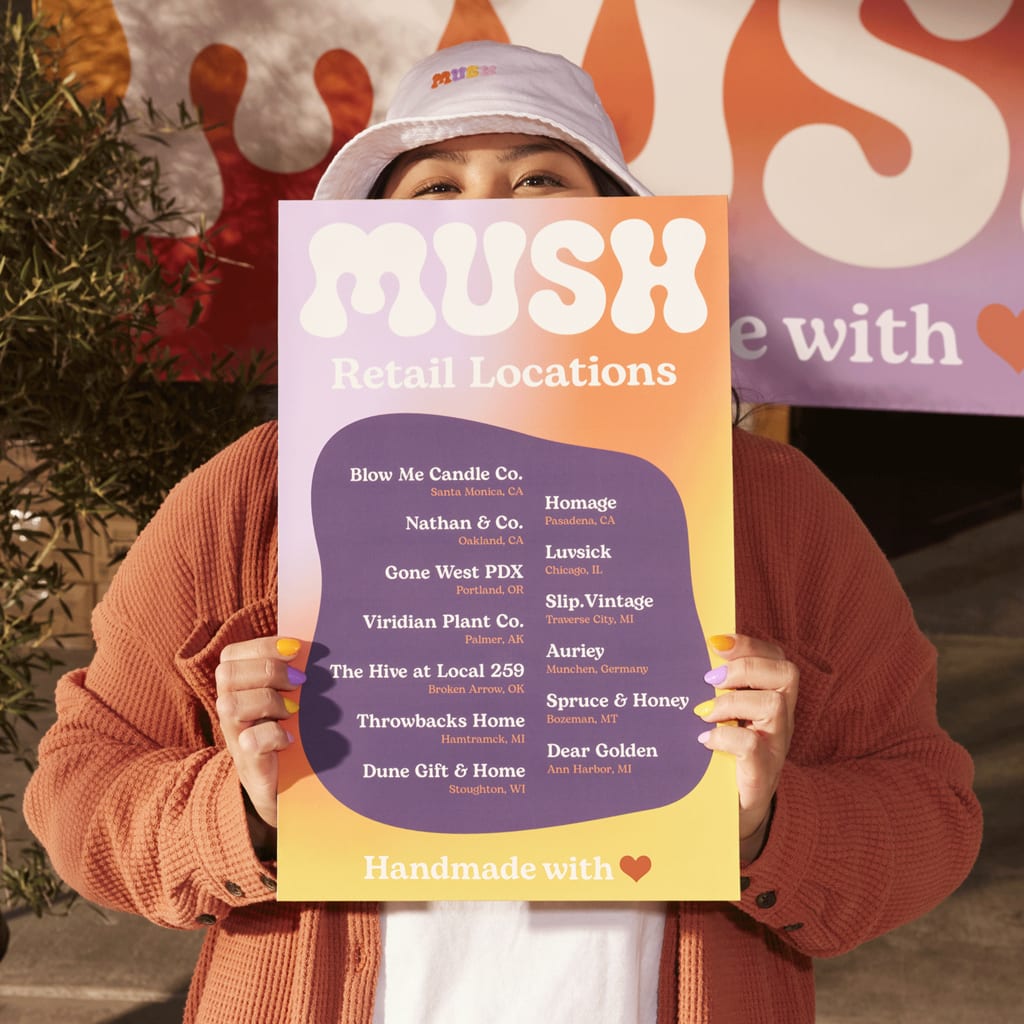
What are the benefits of using AI technology for poster design?
AI offers advantages for different groups of people.
- Small businesses: Test multiple designs for a promotion before choosing one. Instead of hiring a designer for early drafts, you can explore ideas yourself, then print professionally once you decide.
- Students: Create event posters, campaign visuals or project designs without expensive software.
- Entrepreneurs: Experiment with branding and marketing concepts quickly and cheaply.
- Creatives: Push boundaries with new art styles and combinations.
AI makes poster design fast, fun and cost-friendly. You can spark ideas instantly, try endless styles and create professional-looking visuals—no design degree required. It’s the easiest way to test concepts and find the look that fits your brand.
Need extra inspiration? Check out some poster design ideas to kick-start your creativity.
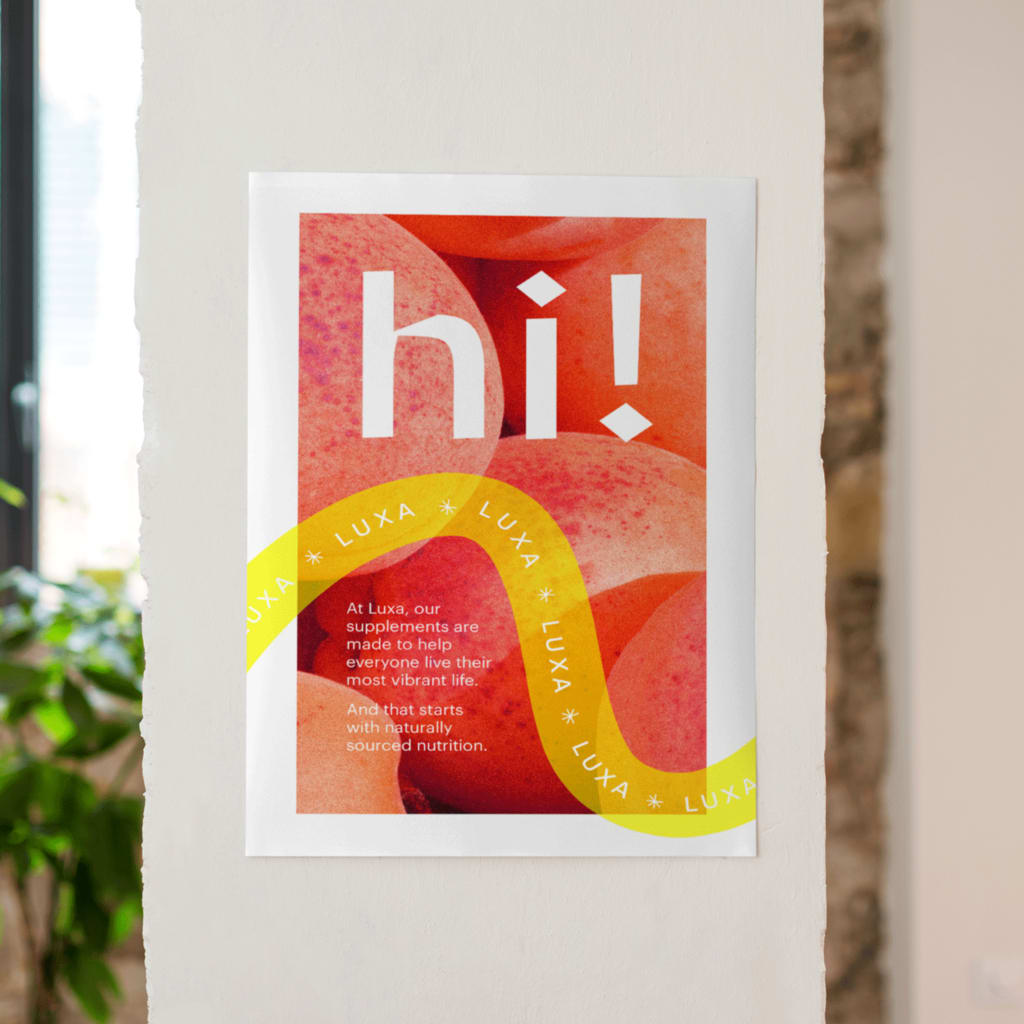
AI generated poster design and print considerations
AI generating is exciting, but AI printing brings in practical considerations. Here’s what to pay attention to:
- File formats: Vista accepts PDF, JPG and PNG. PDF is recommended for sharpness.
- Resolution: Always use 300 DPI. If your AI design is lower, regenerate or use an upscaler.
- Poster sizes: Choose from a range of poster sizes depending on your project. Standard sizes are versatile, but larger formats create more impact.
- Materials and finishes: Glossy adds shine, matte offers a subtle finish and recycled paper gives an eco-friendly touch. Each choice changes the final feel of your poster.
- Color accuracy: AI designs are often in RGB. Printers use CMYK. Ensure color consistency so your printed poster matches your digital design as closely as possible.
Pairing your poster with other print marketing materials can make your campaign even stronger.
Are there copyright or licensing issues with AI-generated posters?
Yes, and it’s really worth being careful.
AI models are trained on massive datasets that can include artists’ artwork. This raises questions around ownership. While AI-generated designs are generally safe to use for personal or commercial projects, you should avoid prompts that mention: trademarks or logos; celebrity names or likenesses; or specific copyrighted artworks
The best practice is to treat AI as inspiration, then customize your design to make it unique and yours. Add your own branding, adjust layouts and refine details. That way, your final poster feels original and avoids potential legal issues.
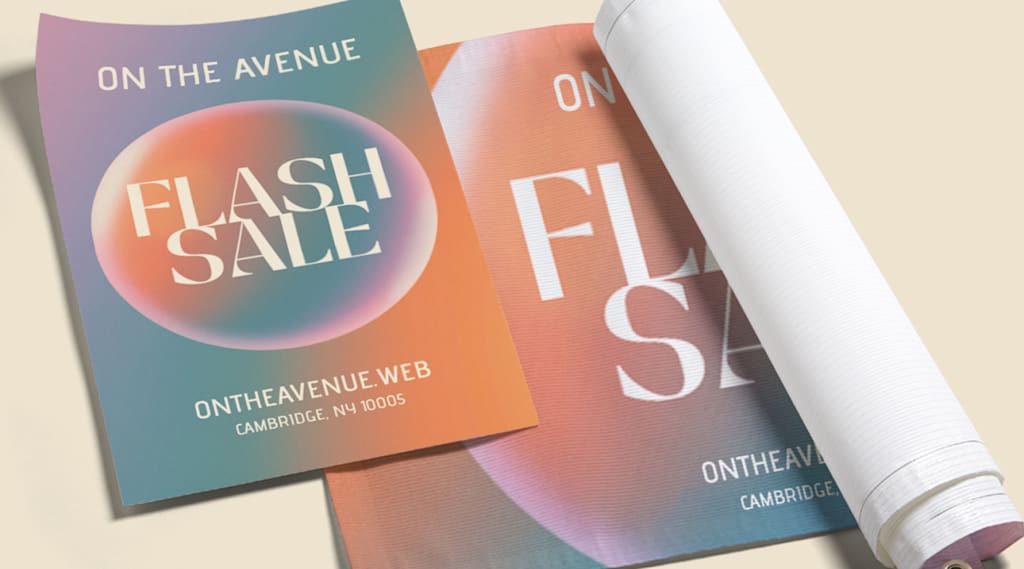
Print your AI poster today
AI has made poster design exciting, fast and approachable. Whether you’re a student, small business owner or creative professional, you can spark ideas instantly and experiment with styles like never before. And once you’re happy with your design, follow our steps to print a high-quality poster. Getting your design from screen to paper requires the right formats, sizes and color mode.
With high-quality printing, a variety of finishes and reliable color accuracy, Vista makes sure your poster design will look as good in your hands as it does on your laptop.
